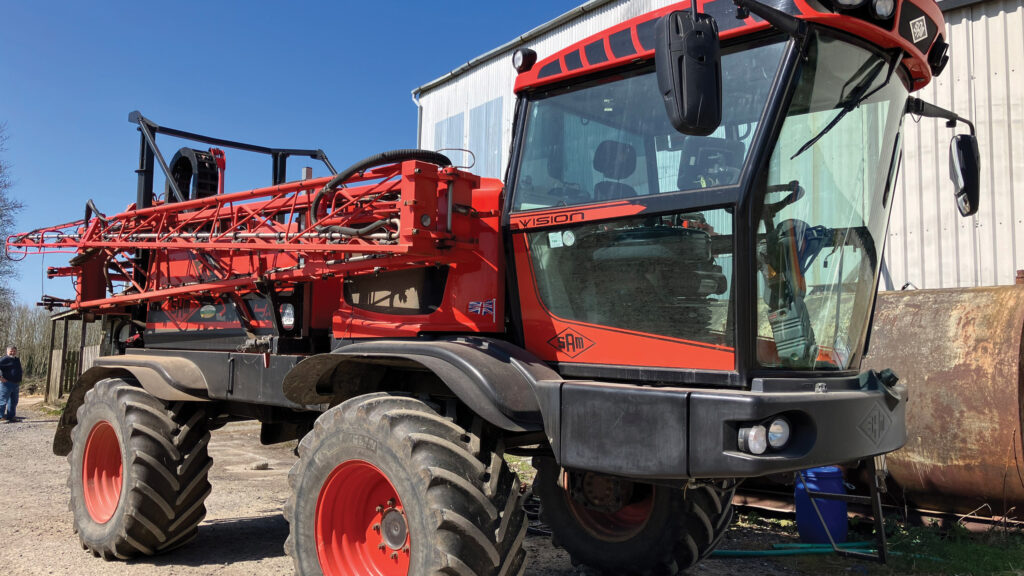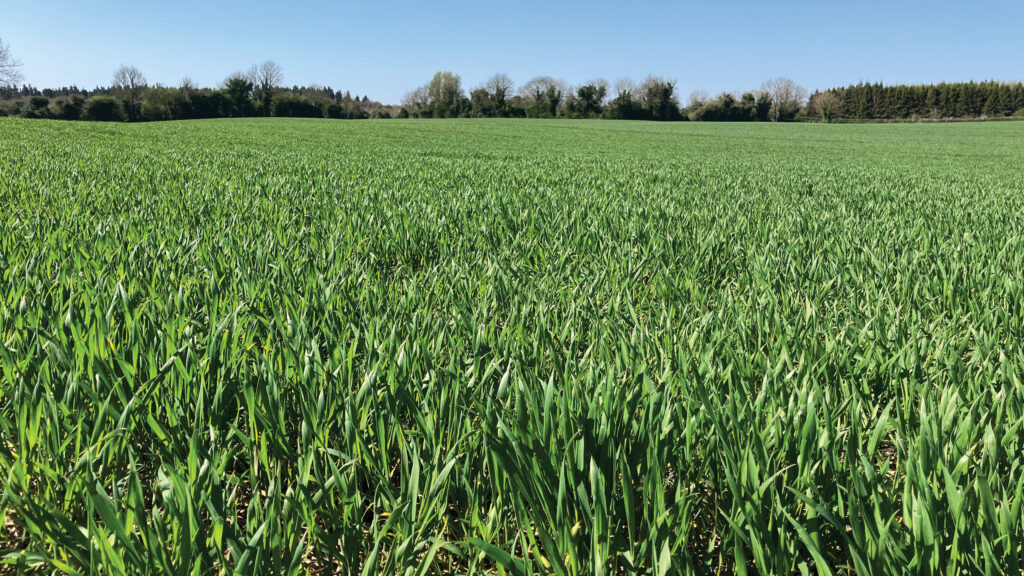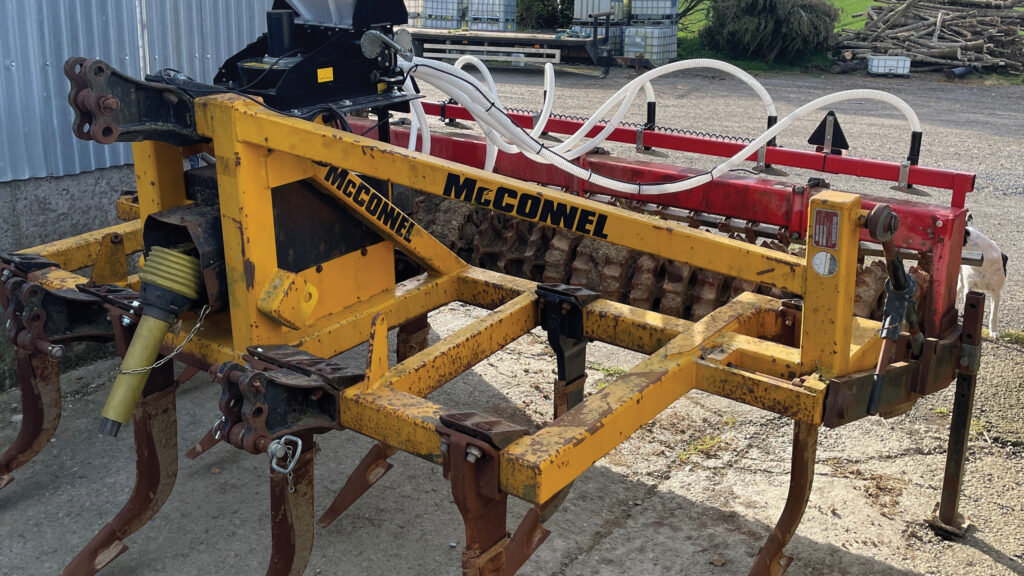Signature seed dressing helps grow fungicide-free crops
 © MAG/Emma Gillbard
© MAG/Emma Gillbard Irish farmer Tom Tierney has been no-till farming for a decade and is using a specialist seed dressing to kick-start crops into action and grow them without fungicides.
The signature seed dressing consists of vermicast extract, molasses, silica and seaweed, and helps gives crops an effective head start.
Crops are regularly topped up with a combination of the mix throughout the season, namely seaweed and molasses with foliar N, and silica with trace elements.
Each component plays a specific role: vermicast provides microbial life, molasses acts as a carbon source, silica helps strengthen cell walls, and seaweed delivers trace elements and natural growth hormones.
See also: ‘Mosaic’ cropping system helps cut winter barley costs
“The key to good crop health is good crop nutrition and this all starts with the soil,” says Tom.
In fact, Tom’s approach sees him use one-third less plant protection products than the average arable farm in Ireland, with his three-year winter wheat yields averaging an impressive 11.6t/ha.

Tom Tiemey © MAG/Emma Gillbard
Drill discovery
A Duncan Enviro DD30 drill is core to the cropping system on the 160ha farm, which lies in County Kildare – a 50-minute drive to the west of Dublin.
Tom discovered the disc drill almost by accident during a trip to New Zealand back in 2013, when his car broke down near the Duncan manufacturing facility in New Zealand’s South Island.
A casual chat with a salesman and a tour of the factory led to a trial of the machine back home in Ireland. That was the lightbulb moment.
“I saw straight away the potential for no-till and how this drill could fit perfectly into our system.
“Since then, I’ve become a representative for Duncan drills in Ireland and the UK, spreading the no-till message.”
Tom modified the drill by adding a simple pump action system to apply his unique seed dressing down the spout at drilling.
He uses 1 litre/ha of each substance applied in a total volume of 100 litres/ha, acting as a starter feed for both seed and soil.

© Tom Tiemey
On-site wormery
Every crop at Ballinafagh Farm receives a composted manure blend made from chicken litter, horse manure, woodchip, and spent mushroom compost to add organic matter and stimulate soil microbiology.
Tom also has on-farm wormeries which he sources vermi-juice from – a naturally nutrient-rich liquid feed produced by worms which acts as an effective soil conditioner.
To achieve this, Tom simply fills an IBC with compost and a species of earthworm known as tiger worms which are specifically used for composting.
The top of the IBC is cut off and drainage holes drilled into the lid. The lid is placed into the bottom of the IBC to filter-off the liquid.
“Worms are the workers – they convert organic matter into food for biology which in turn creates food for the plant.”
“I keep the IBC tanks in the dark to optimise worm activity and mimic being underground,” he adds.
Fungicide-free crops

© MAG/Emma Gillbard
Tom stepped completely away from using insecticides and now aims to grow crops without fungicides and only uses them when absolutely necessary.
He first trialled fungicide-free wheat on a 4ha block four years ago. He realised by focusing on plant structure and nutrition, disease pressure could be significantly reduced.
“One of my ideas was to not apply a plant growth regulator to the winter wheat.
“This would reduce the chance of disease spread up the plant as there would be a greater distance between the nodes and the leaves,” he says.
A simple herbicide switch from an autumn to a spring application, means crops are no longer stressed in the autumn which can otherwise bring an influx of disease.
“Crops also benefit from the growth regulation effect of the herbicide in the spring which allows us to no longer use a PGR,” says Tom.
More time, more acres
Tom’s transition to no-till provided a key way to scale up the farming business.
In a region where land is hard to come by, less time working each acre of land has allowed Tom to expand through contract farming partnerships.
His daughter Erin, who is also involved with the business, is keen to share the message of sustainable farming with the general public.
He credits silica as a vital component in agronomy programmes as a natural disease control alternative.
Tom frequently includes silica with trace elements applications of calcium, magnesium, boron, plus regular applications of seaweed to support plant health.
“It’s about building resilience in the plant. If your nutrition is right and your biology is thriving, the crop can defend itself.”
In terms of nitrogen use, Tom applies a total of 160kg N/ha. The majority is granular applied with 35kg/ha delivered via melted urea.
For foliar feeds, he uses a little and often approach – about 8-10kg N/ha per pass, maxing out at 12kg N/ha to avoid crop scorch.
Seaweed and molasses are added to foliar N as a carbon source to enhance uptake. About 150g/ha of seaweed is used.
Tom has trialled sap testing, but felt it didn’t bring that much of an added benefit when it came to crop nutrition.
He likes to keep things simple. “If it doesn’t pay or it complicates things, I leave it out,” he says.
“It is about balance and flexibility and how we manage the system as a whole.”
Deeper cultivations provide adaptive weather tactics

© Tom Tiemey
After 10 years of no-till, Tom is selectively introducing soil cultivations back into the rotation.
He has recently modified a subsoiler with a seed hopper to establish oilseed rape with a deeper cultivation one year in five in the rotation.
“It’s not a complete cultivation reset, but it will add another tool to the system and should alleviate any potential soil compaction when conditions call for it,” he says.
Following the wet autumn of 2023, which saw 1,120mm of rainfall from July 2023 to February 2024, Tom wanted to add more flexibility to his system.
“We lost over 50% of our winter wheat crop that season, which was replanted to spring oats and beans.
“On heavy clay soils with up to 60% clay content, this extreme weather can be a challenge in no-till systems.
“The weight of water landing onto the land was the equivalent to 11,200t/ha. That can cause significant top-layer compaction.”
Cropping consists of winter wheat, winter barley, winter oats, spring barley, spring beans and oilseed rape.
By strategically using the subsoiler for oilseed rape establishment, Tom hopes the one-pass system will benefit crops and soils across the rotation.
Tom also uses a light 10mm stubble cultivation after oilseed rape and cereal crops to incorporate straw and manage slug risks.
In Ireland, it is a requirement to incorporate chopped cereal straw and compost applications into the soil.
The stubble cultivation also provides a prime opportunity to establish cover crops in the same pass, which forms another key part of Tom’s farming system.

